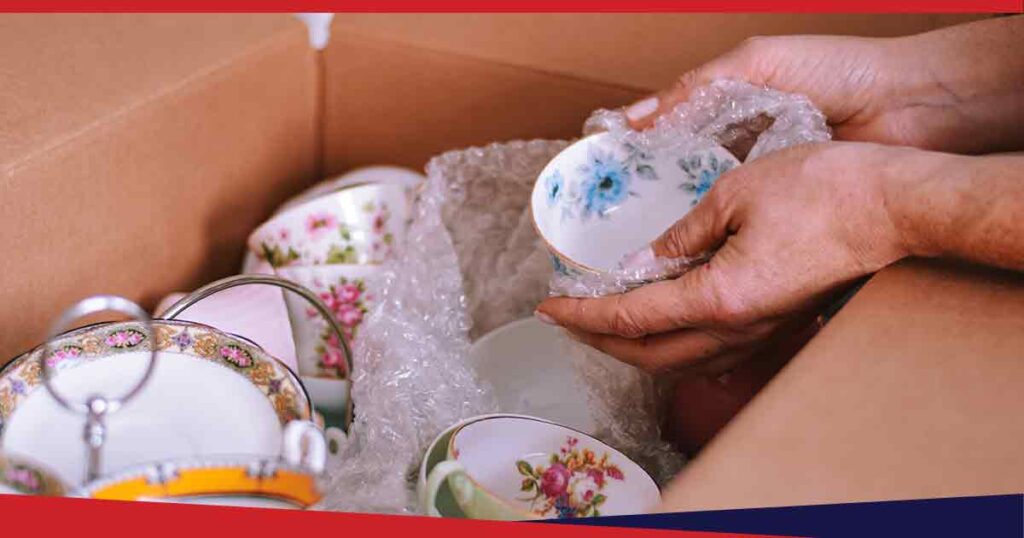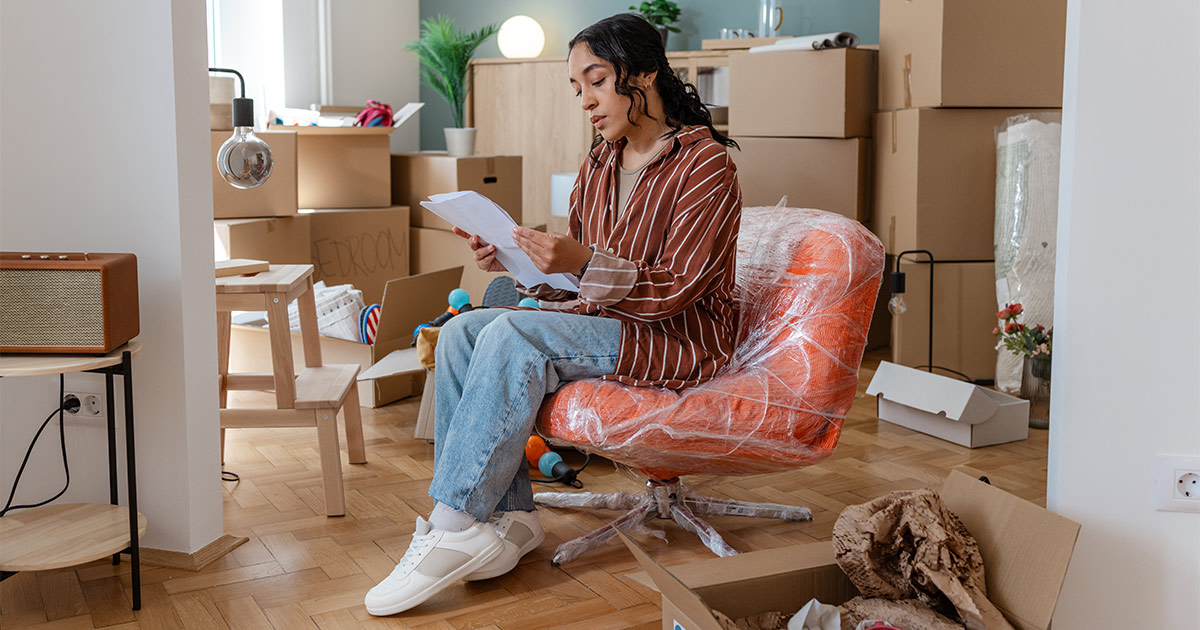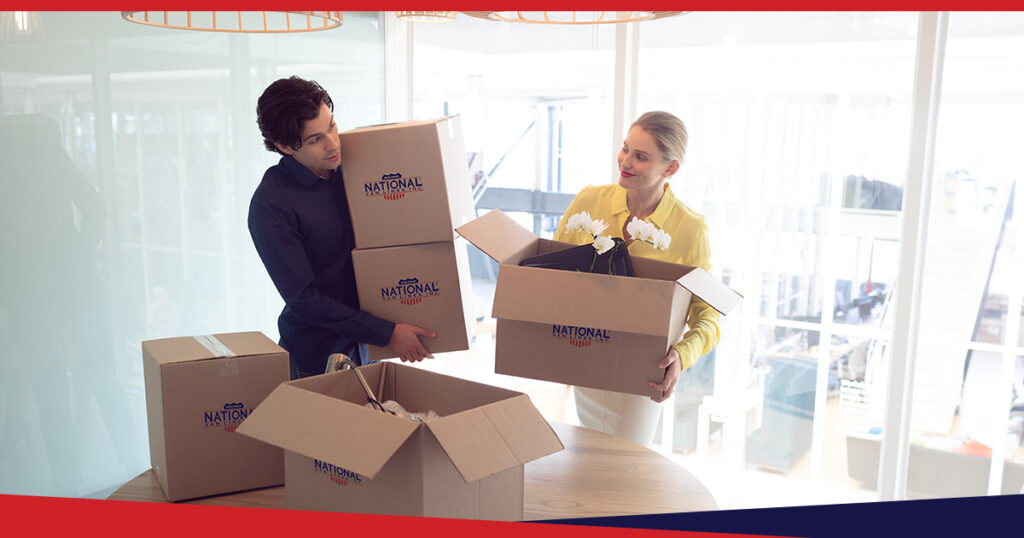
When you’re preparing for a long distance move, it’s normal to worry about what will happen to your belongings once they’re out of your sight. Maybe you’re nervous about a fragile family heirloom making it across the country, or you’ve saved up for a new TV and can’t imagine replacing it if it breaks. These worries are real, and they’re why so many people start asking questions about protection before moving day.
At National Van Lines, we’ve helped families and individuals move across the country for nearly a century. One of the most important parts of any move is understanding how your belongings are covered if something gets lost or damaged. Many people hear the word “insurance” and assume that’s what moving companies provide. But the truth is different: movers offer something called moving valuation, which is not the same as insurance.
In this article, you’ll learn:
- What moving valuation means
- Why movers don’t provide insurance but do provide valuation
- The two main types of moving valuation coverage
- How valuation works in a long distance move
- Tips for choosing the right coverage for your situation

What Does Moving Valuation Mean?
Moving valuation is the level of responsibility your moving company takes for your belongings while they’re in their care. Think of it as the mover’s written promise about what happens if something is lost, broken, or damaged during the move.
Here’s where it gets confusing for many people: movers don’t technically sell insurance. They’re not licensed insurance providers, which means they can’t offer you an insurance policy the way an auto or home insurance company would. Instead, federal law requires movers to provide valuation coverage. This sets the amount they are liable for if something happens to your items.
That difference matters. With insurance, you’re dealing with a third-party provider. With valuation, you’re dealing directly with your mover, and the agreement is built into your moving contract.
What Are the Types of Moving Valuation Coverage?
When you’re looking at your paperwork, you’ll usually see two main choices for moving valuation. Understanding the difference helps you feel more in control.
Basic Coverage (Released Value Protection)
- Comes included at no cost.
- Movers your belongings by weight, at 60 cents per pound per article.
- Example: If a 10-pound chair is damaged, the maximum you’d receive is $6.00, no matter what the chair originally cost.
- Works best when you’re moving mostly low-value items, or you’re not as concerned about replacement.
Full Value Protection
- Available for an additional fee.
- The mover agrees to repair the item, replace it with something of equal value, or reimburse you at the current market price.
- Example: If your $700 TV is damaged beyond repair, you would be reimbursed enough to replace it.
- A strong choice for long distance moving, when your belongings spend more time in transit and the risk of damage or loss increases.
Think of it this way: Basic coverage is bare minimum. Full value protection is a much more secure safety net.

How Does Moving Valuation Work in Long Distance Moving?
Long distance moving involves more steps, more travel, and more time. That’s why valuation becomes especially important when you’re relocating across state lines.
Here’s how it might look in real life:
- A missing box: If one box doesn’t make it to your new home, valuation determines how much you’ll be paid back.
- A broken piece of furniture: If your dining table is damaged, the coverage you chose determines whether you’re reimbursed a few dollars by weight or enough to replace it.
- Filing a claim: You submit a written claim to your mover. They review it under the terms of the valuation option you selected.
With basic coverage, the value is always tied to weight. With full value protection, the mover’s responsibility is tied to what it would actually cost to repair or replace the item today.
How to Choose the Right Moving Valuation Option
This decision often comes down to your comfort level and what you’re moving. Ask yourself:
- What are the most valuable things I’m bringing? If you have electronics, antiques, or sentimental furniture, full value protection offers more security.
- How far am I going? The longer the journey, the more opportunities for something unexpected to happen. For long distance moving, full value protection is usually the safer choice.
- How much peace of mind do I need? Some people are comfortable with the bare minimum, but many find relief in knowing they’ll be fairly reimbursed if something goes wrong.
Always double-check your bill of lading, which is your official moving contract, to confirm which option is listed. It should clearly state the coverage you chose before the truck pulls away.

Setting the Stage for a Safer Move
Moving valuation has become a standard in the moving industry because people deserve clear protection for their belongings. Today, it provides a reliable way to understand exactly what a mover is responsible for, and it helps you make an informed choice that fits your situation.
By taking time before moving day to review your options, you’ll step into your long distance move with fewer worries and more peace of mind. Whether you choose basic coverage or full value protection, what matters most is knowing that you’ve set clear expectations and secured the level of protection that feels right for you.
You’ve just learned about what moving valuation is, and how it can offer you invaluable peace of mind during a long distance move. Now, you’re probably hoping to figure out which company will offer you the best protection and experience. Learn more by reading our article about how to choose a long distance moving company you can trust.





